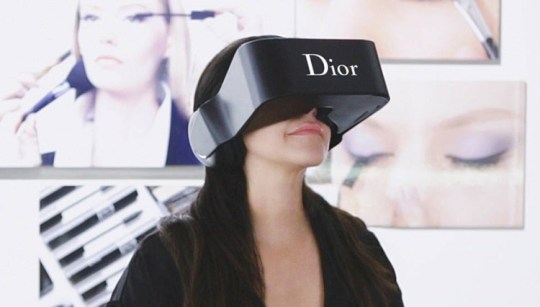By Klaudia Tirico, Features Editor

This year has introduced retailers to a variety of unique, technology-driven opportunities to engage with consumers. Ever since the Pokémon Go craze, augmented reality (AR) and virtual reality (VR) have been hot topics in the industry, although only a few brands have been actively experimenting with the technologies. The fashion industry, in particular, is already dabbling in VR by offering customers high-end, hyper-personalized luxury experiences.
“[Fashion brands] will likely continue to invest more in VR in the upcoming year, because it’s creating a place to make a much more intimate connection with consumers,” said Roy DeYoung, SVP of Creative Strategy at PMX Agency. “VR really came to life during the fall Fashion Week, via partnerships like Intel and the Voke app, bringing the normally more exclusive experience to many more, and creating substantially more exposure for the brands.”
Interested in working virtual reality into your brand’s customer experience strategy? Here’s how four high-fashion brands implemented VR within their businesses.
Rag & Bone Creates A ‘Visual Landscape’
In December 2016, apparel brand Rag & Bone partnered with Google to develop its first virtual reality documentary. The six-minute VR film displayed a behind-the-scenes look at the brand’s New York Fashion Week show.
“The show’s custom music and lights were designed to be immersive and create a ‘visual landscape’ primed for VR,“ Rag & Bone CEO Marcus Wainwright told WWD. "Since VR provides the viewer with a 360-degree video, the film could be viewed and experienced differently every time on Google’s own VR headset, the Daydream View.
“Even if you set out to achieve something, depending on where the watcher is looking, you can see something completely different,” Wainwright said in a statement. “I didn’t think about that at the beginning, but once I saw it, I realized it won’t be the same for anybody, really.”
Topshop Provides Front-Row Seats To Fashion Show
Before virtual reality was a buzzing topic, fashion retailer Topshop gave fashionistas and consumers the opportunity to view its Unique Fall 2014 fashion show during London Fashion Week.
Topshop allowed a few competition winners to watch the fashion show via an Oculus headset while the show was happening, and later the retailer allowed in-store shoppers to experience the show on-demand.
Through VR, Topshop provided consumers who are unable to sit front row at a fashion show a chance to experience the excitement, giving them a new way to engage with the brand.
Dior Offers Backstage Pass
Fashion house Dior took virtual reality a step further by creating its own branded VR headset, called Dior Eyes, in 2015. Much like Rag & Bone and Topshop’s VR experiences, the brand allowed consumers at select Dior stores to watch models preparing before the fashion show, getting their makeup done by Dior’s Creative and Image Director Peter Philipps.
Dior Eyes featured high-definition image resolution that allowed viewers to immerse themselves into the backstage world of Dior.
Tommy Hilfiger Brings VR In-Store
Fashion house Tommy Hilfiger also brought its fashion show to the masses by offering Samsung GearVR headsets for in-store shoppers to play with. Tommy Hilfiger essentially gave shoppers a front-row seat at the runway.
“Through virtual reality, we’re now able to bring our one-of-a-kind fashion show to the retail setting,” Tommy Hilfiger told Forbes. “From the incredible set and music to exclusive backstage moments, consumers will be able to watch the clothes move and see the collection in the original show environment – it’s a compelling and interesting elevation of the traditional shopping experience.”
Virtual reality may not be available to the general audience unless the person owns a headset, but bringing the technology into stores does offer a new and unique way to drive traffic to brick-and-mortar locations. And it doesn’t necessarily have to go the VR headset route. There are also VR mirror and AR fitting rooms that brands such as Rebecca Minkoff have already implemented within their stores.
But the goal with the technology is to go well beyond the headset experience to create something truly immersive — and it may be coming sooner than you might think.
“Right now, VR is completely immersive and you really can’t do anything else while in the experience, headset on, unaware of what is going on around you,” said DeYoung. “The big game changer we are all waiting for, especially fashion, is the promised Facebook VR experience. This will enable a fully UX experience while in VR: Internet navigating, chat, hand controllers, grounds for a completely revolutionary e-Commerce experience. Mark Zuckerberg believes we will see this come to fruition in 2017.”
Virtual reality may seem like an expensive and inaccessible technology for many brands and retailers, but as it gains popularity (and potentially its costs come down), the possibilities will be endless. It’s simply the next step in the future of retail. Will you get on board?






